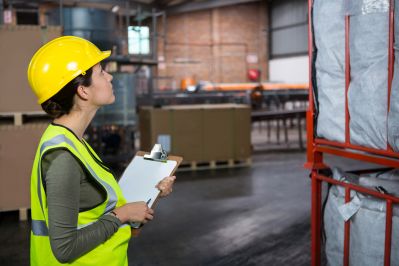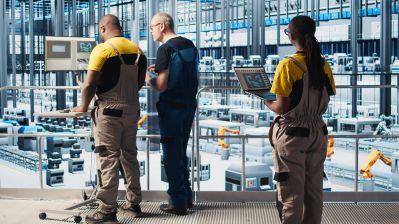AI not only makes plants smarter, it makes them safer
Traditional security systems can no longer meet the growing threats facing today's manufacturing plants, but artificial intelligence can. New AI-powered security systems are tireless sentinels, constantly analyzing data from security cameras, environmental sensors, and other integrated systems. Huvr CEO Herman DeBoard details how AI's surveillance equips plants with real-time threat detection, continuous monitoring, and predictive insights.
By nature, manufacturing plants are extremely busy environments. Countless employees, contractors, and visitors move throughout the facility and factory floor every day, and this complexity presents vulnerabilities. Theft and sabotage are mounting issues in the industry that disrupt production lines, causing costly downtime and direct losses.

Huvr CEO Herman DeBoard
Above the risk to physical assets, workplace safety is always the top concern. In heavy manufacturing facilities where machinery and hazardous materials pose daily risks, accidents can have devastating consequences for employees and the business.
Conventional security systems in manufacturing facilities often fall short. Human patrols are inevitably stretched thin when tasked to monitor a large plant. And while recorded footage from security cameras is available, security teams access it long after an incident occurs.
An AI-powered surveillance system bridges these gaps with advanced behavioral analytics and real-time anomaly detection. Think of it as a vigilant new team member who monitors your entire facility 24/7.
When an AI-driven security system taps into the facility's cameras, alarms, and environmental sensors, it can watch, listen, and feel everything that goes on. It detects patterns and is quickly able to detect anomalies. Much like a living brain, it learns how to make the facility safer and who to alert in the event of a threat.

As the system's advanced computer vision and environmental sensors monitor the entire building, its machine learning algorithms detect anything that deviates from the norm. For example, it will take note of an unauthorized vehicle entering the parking lot, an individual loitering near a restricted area, or an employee operating heavy machinery without safety gear. It will also notice an employee returning to the same storage area multiple times or improperly handling equipment.
These and hundreds of other subtle deviations can indicate unauthorized access, theft, and unsafe practices. Over time, the system becomes extremely accurate in assigning each anomaly a threat level from low to high.
When anomaly detection algorithms flag these unexpected patterns, the system immediately alerts supervisors or security staff. It supplies them with a detailed description of the incident.
How AI surveillance optimizes emergency response
These systems do more than just detect threats -- they optimize emergency responses. When an incident occurs, such as a fire, chemical spill, or medical emergency, the AI system rapidly analyzes data from various sources to provide critical insights.
It instantly identifies the nature and scope of the threat, informs the relevant personnel, and suggests the most effective response. This proactive approach significantly reduces response times and mitigates the impact of emergencies.
AI security means continuous monitoring of high-risk areas
Manufacturing plants contain numerous high-risk zones that demand continuous vigilance. From production lines and storage areas to loading docks and entry points, AI-powered surveillance ensures round-the-clock monitoring. It keeps a watchful eye on every corner and immediately addresses any suspicious activity or potential hazard.

Even the best security teams encounter lapses due to fatigue, distraction, and shift changes. Added surveillance from artificial intelligence means manufacturing plants remain vigilant at all times. AI-powered security systems never take a break or doze off.
Data-driven insights for enhanced plant security
Despite its many advantages, an AI-powered security system is not designed to replace a human security team. The system works best when it collaborates with security staff to enhance their efforts.
AI-powered security systems constantly sift through a flood of incoming data to improve plant security. They continuously evaluate surveillance feeds and incident reports to identify when and where a plant is most vulnerable. The system's actionable insights allow facility managers to target surveillance during high-risk periods or to optimize coverage in the most critical zones.
Equally important is the broader impact these technologies have on workplace culture.
When managers and supervisors receive data on safety violations, they can conduct proactive training before injuries occur. AI security solutions enforce a higher level of accountability, encouraging employees to operate with integrity and adhere to safety protocols. Over time, this fosters a culture where protecting assets and ensuring personal safety becomes a shared responsibility.
Insights from AI-powered surveillance systems enable a proactive approach to risk management. Thanks to AI, Manufacturing facilities are no longer simply reacting to threats -- they're proactively creating environments where assets and employees are more secure. It's a new era of surveillance that shapes a culture of accountability and safety.
Want more information? Click below.
Rate this article
View our terms of use and privacy policy ::m::